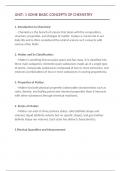3.
How does Avogadro\'s Law relate to the concept of the mole, and why is it crucial for understanding the behavior of gases in chemistry?
Answer: Avogadro\'s Law states that equal volumes of gases, under the same conditions of temperature and pressure, contain the same number of particles. This law is fundamental for the concept of the mole in chemistry, as it establishes a direct relationship between the volume of a gas and the number of gas particles (atoms or molecules) it contains. Avogadro\'s number, approximately 6.022 x 10^23, is the number of entities in one mole of a substance. Understanding this relationship is crucial for performing calculations involving gases, such as determining the number of moles or particles in a given volume of gas or predicting gas behavior under different conditions.




